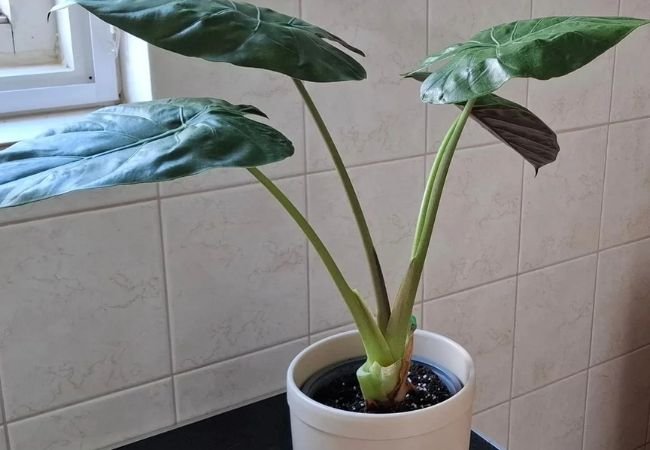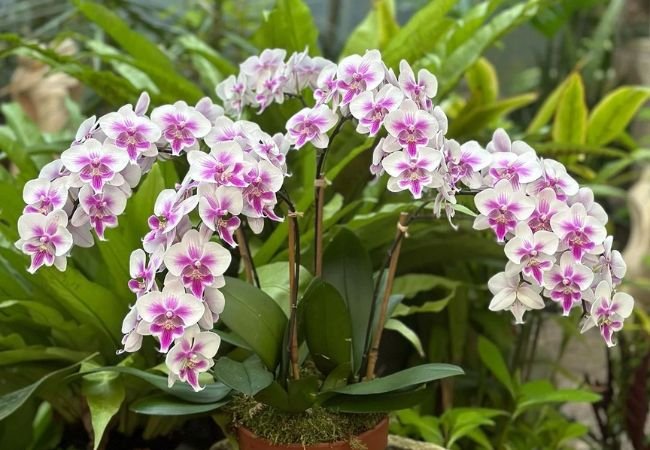Discover how to care for Alocasia Wentii, the tropical stunner with glossy leaves and purple undersides. Learn about light, water, propagation, and more—backed by 10 years of gardening expertise.

I still remember the first time I laid eyes on an Alocasia Wentii. Its leaves—glossy green on top, metallic purple underneath—looked like something out of a fairy tale. But within weeks, my excitement turned to panic when its leaves started yellowing. Turns out, I’d been overwatering it. After a decade of nurturing these tropical beauties, I’ve learned their quirks inside out. Let’s dive into everything you need to know about Alocasia Wentii care, from avoiding rookie mistakes to unlocking its full jungle potential.
What Makes Alocasia Wentii Special?
Alocasia Wentii, nicknamed the “Hardy Elephant Ear,” is a hybrid tropical plant prized for its striking foliage. Unlike its fussier cousins, this variety thrives in a broader range of conditions, making it ideal for indoor gardeners. Here’s what sets it apart:
- Dual-Tone Leaves: Deep green tops with shimmering purple undersides create a dramatic contrast .
- Compact Size: Grows 3–5 feet tall indoors, perfect for tabletops or statement corners .
- Resilience: Tolerates cooler temperatures (down to 45°F) better than most Alocasias .
But don’t let “hardy” fool you—this plant still demands attention to thrive.
Alocasia Wentii Care: Light, Water, and Soil Secrets
1. Light: Bright but Gentle
Alocasia Wentii loves bright, indirect light—think near an east-facing window with a sheer curtain. Direct sun scorches its leaves, while low light causes leggy growth. Pro tip: Rotate the pot weekly for even growth. I once placed mine in a dim hallway, and within a month, it looked like it was reaching for the nearest flashlight .
2. Watering: The Goldilocks Zone
Overwatering is the #1 killer. Water only when the top 1–2 inches of soil are dry, and use a pot with drainage holes. In winter, cut back to once every 10–14 days. My rule? Stick your finger in the soil—if it feels like a damp sponge, wait another day .
3. Soil: Fast-Draining & Nutrient-Rich
Mix 1 part potting soil, 1 part perlite, and 1 part peat moss for ideal drainage. I’ve found adding orchid bark boosts aeration, mimicking its rainforest floor roots . Avoid heavy soils—they’re a fast track to root rot.
Propagating Alocasia Wentii: Multiply Your Jungle
Propagation is simpler than you’d think:
Step 1: Divide the Rhizomes
- Wait until spring, when the plant is actively growing.
- Gently remove it from the pot and shake off excess soil.
- Use sterile shears to separate tubers (bulb-like structures) from the mother plant .
Step 2: Plant the Offsets
- Place tubers in water until roots develop (about 2–3 weeks).
- Transfer to a small pot with the same soil mix as the parent plant.
I’ve propagated over 20 Wentii pups this way—some even bloomed tiny spathe flowers (a rare treat!) .
Troubleshooting Common Problems
| Issue | Cause | Fix |
|---|---|---|
| Yellow Leaves | Overwatering | Let soil dry fully; trim damaged roots . |
| Brown Leaf Edges | Low Humidity | Mist daily or use a humidifier (aim for 60%+ humidity) . |
| Leggy Growth | Insufficient Light | Move to brighter spot or add a grow light . |
| Spider Mites | Dry Air | Wipe leaves with neem oil or insecticidal soap . |
Alocasia Wentii vs. Other Elephant Ears
Confused about how Wentii stacks up against similar plants? Here’s the breakdown:
| Feature | Alocasia Wentii | Colocasia (Taro) | Alocasia Regal Shield |
|---|---|---|---|
| Leaf Direction | Upward-pointing | Downward-drooping | Upward, wavy edges |
| Toxicity | Toxic (all parts) | Edible tubers (cooked) | Toxic |
| Light Needs | Bright indirect | Full sun | Medium indirect |
| Max Height Indoors | 5 feet | 6+ feet | 4 feet |
For more comparisons, check out my guide on Alocasia vs. Colocasia.
FAQs: Your Top Alocasia Wentii Questions Answered
Q: Is Alocasia Wentii safe for pets?
A: No—it contains calcium oxalate crystals that cause mouth irritation in cats, dogs, and humans. Keep it elevated .
Q: Does it flower indoors?
A: Rarely. Its small, calla-like blooms are overshadowed by the foliage. Focus on leaf health instead .
Q: What’s the rarest variety?
A: Alocasia Wentii Variegated, with creamy-white streaks. It needs brighter light to maintain its patterns .
Pro Tips from a Decade of Experience
- Boost Humidity Cheaply: Place the pot on a tray filled with water and pebbles. Evaporation mimics tropical air .
- Fertilize Smartly: Use a balanced liquid fertilizer (10-10-10) every 4 weeks in spring/summer. Skip winter feeds .
- Repot Sparingly: Wait until roots poke through drainage holes. These plants love being slightly root-bound .
Tools & Resources I Trust [External Links]
- Cornell Composting Guide – Perfect soil mixes.
- University of Vermont Soil Testing – Lab analysis for serious growers.
- Royal Horticultural Society – Pest control tips.
- EPA Air Purifying Plants – Why Wentii cleans your air.
- NCBI Toxicity Study – Safety data for pet owners.
Final Thoughts
Alocasia Wentii is more than a plant—it’s a living sculpture. With the right balance of light, water, and humidity, it’ll reward you with year-round drama. Ready to add one to your collection? Share your journey in the comments or explore my guide on natural humidity hacks for tropical plants.
Happy growing! 🌿





One comment on “Alocasia Wentii Care Guide: Mastering the Hardy Elephant Ear Plant”